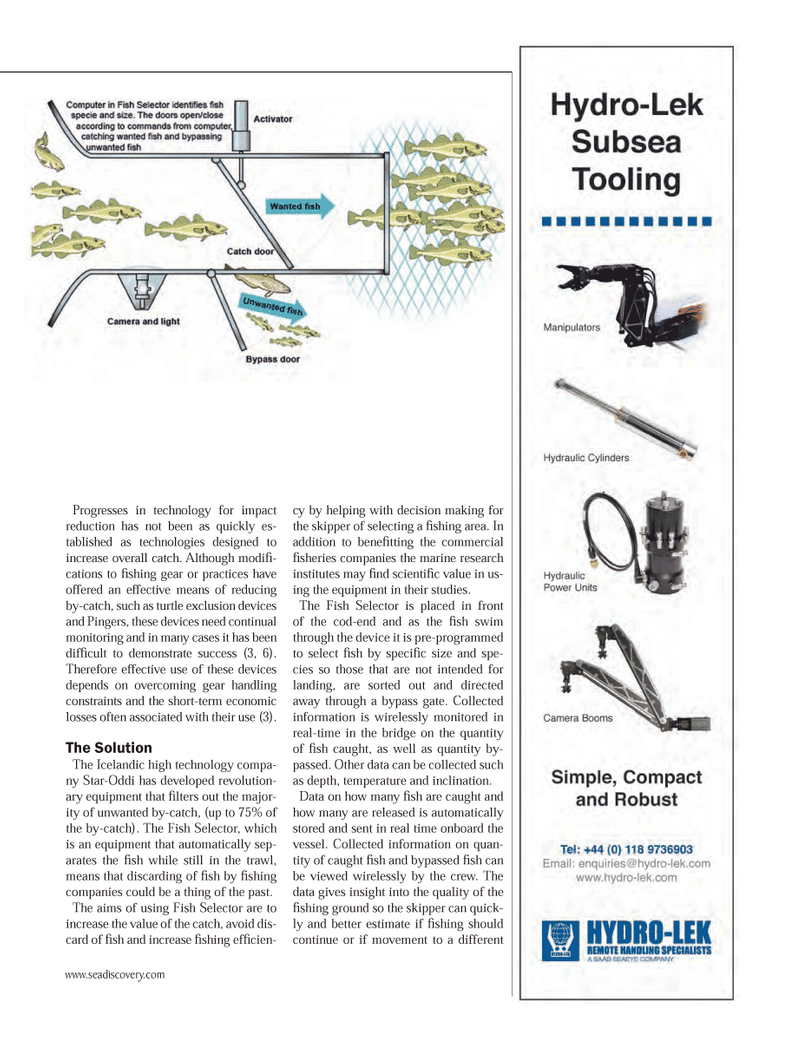
Page 37: of Marine Technology Magazine (May 2014)
AUV Operations
Read this page in Pdf, Flash or Html5 edition of May 2014 Marine Technology Magazine
Progresses in technology for impact reduction has not been as quickly es-tablished as technologies designed to increase overall catch. Although modiÞ -cations to Þ shing gear or practices have offered an effective means of reducing by-catch, such as turtle exclusion devices and Pingers, these devices need continual monitoring and in many cases it has been difÞ cult to demonstrate success (3, 6). Therefore effective use of these devices depends on overcoming gear handling constraints and the short-term economic losses often associated with their use (3). The Solution The Icelandic high technology compa-ny Star-Oddi has developed revolution- ary equipment that Þ lters out the major- ity of unwanted by-catch, (up to 75% of the by-catch). The Fish Selector, which is an equipment that automatically sep-arates the Þ sh while still in the trawl, means that discarding of Þ sh by Þ shing companies could be a thing of the past. The aims of using Fish Selector are to increase the value of the catch, avoid dis- card of Þ sh and increase Þ shing efÞ cien- cy by helping with decision making for the skipper of selecting a Þ shing area. In addition to beneÞ tting the commercial Þ sheries companies the marine research institutes may Þ nd scientiÞ c value in us- ing the equipment in their studies. The Fish Selector is placed in front of the cod-end and as the Þ sh swim through the device it is pre-programmed to select Þ sh by speciÞ c size and spe- cies so those that are not intended for landing, are sorted out and directed away through a bypass gate. Collected information is wirelessly monitored in real-time in the bridge on the quantity of Þ sh caught, as well as quantity by- passed. Other data can be collected such as depth, temperature and inclination. Data on how many Þ sh are caught and how many are released is automatically stored and sent in real time onboard the vessel. Collected information on quan- tity of caught Þ sh and bypassed Þ sh can be viewed wirelessly by the crew. The data gives insight into the quality of the Þ shing ground so the skipper can quick- ly and better estimate if Þ shing should continue or if movement to a different www.seadiscovery.com MTR #4 (34-49).indd 37MTR #4 (34-49).indd 375/12/2014 4:16:02 PM5/12/2014 4:16:02 PM

 36
36

 38
38
